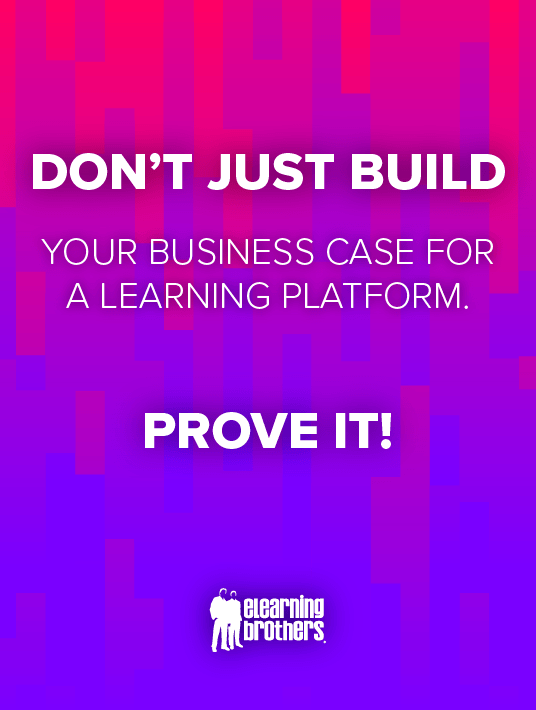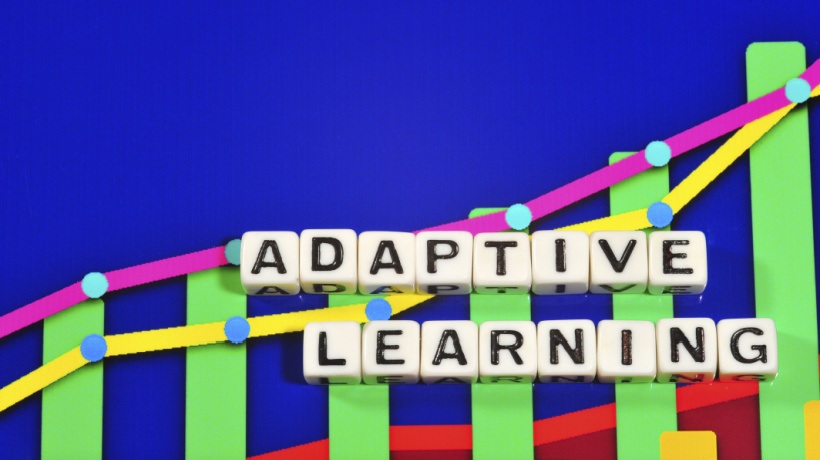4 Steps For Buying & Implementing A Learning Platform...The Right Way!
In our previous article, we highlighted the challenges that organizations face when buying and implementing a learning platform. So, here’s our alternative. Instead of going straight to a high-stakes business case based on what really comes down to hypothetical assumptions, do these four things:
- Assemble Your Team
- Decide What Matters
- Find Your Solution
- Conduct a Proof of Concept
Let’s break each of these down in this guide!

1. Assemble Your Team
When you’re going into the process of finding and purchasing a learning platform, it’s easy to get stuck in a couple of traps. Here are two things you DON’T want to do.
First, don’t get stuck in the trap of focusing only on your own use cases. You need to look beyond your team, group, or business unit to see who else in your organization might benefit from a learning platform and find out what use cases are important to them.
You might be looking for a solution to deliver new hire safety, compliance, and regulatory training, but don’t stop there. How about channel partner training, culture development, and new product training? Customer training is another often overlooked area.
Don’t stop with, “I need an LMS to deliver HR compliance and skills training,” or even with, “…to provide certification for employees,” but also think about how you can empower your workforce with opportunities for professional development and individual growth. Don’t just satisfy the need for compliance and skills training—fuel the passion for learning so you can engage your employees, retain top talent, and maximize their potential.
Don’t get stuck in the trap of only focusing on your immediate needs
Create a vision of what digital learning looks like in your organization 5 – 10 years from now, and make sure you’re thinking about how the investment you make today can grow with you over time.
How can you accomplish these goals and avoid these two traps?
Assemble a cross-functional team that can bring a variety of use cases, problems, and opportunities to the table, plus work with you to create a vision that’s bigger and better than what you might come up with on your own. Your ultimate LMS search team should include representation from:
- Each of your business units (Executive, sales, product, field personnel, etc.)
- Different geographical regions, especially if they cut across countries, languages, and cultures
- All end-user roles of people that will interact with the learning platform (Business owners, technical administrators, content creators, curriculum developers, technical support, and a variety of different learners)
Although this might start out for you as an HR or L&D initiative, by ensuring good representation from across the organization, you’re going to end up making better decisions and a better investment that will yield significant dividends.
2. Decide What Matters
When you’re shopping for a learning platform, it’s tempting to go online and search for all the bells and whistles or pay a consultant to provide you a list of must-have features for a learning platform. For many, this list—without further thought or reflection—then becomes an exhaustive and comprehensive checklist that constitutes the minimum criteria any contending solution must meet in order to be considered. But products with longer feature lists, and more checks in the boxes, aren’t necessarily the right fit for your needs. Often, less is more. And a simple solution with the right feature set will avoid unnecessary complexity for your platform administrators and learners.
3. Find Your Solution
Once you’ve decided what matters most to you, and have identified key use cases and functionality, it’s time to find your solution! The traditional approach is to issue a Request for Proposals (RFP), which typically consists of hundreds of questions spread across multiple spreadsheets and documents, that vendors must respond to in order to be considered. This process has its merits, but it also requires a lot of time and effort on your part to follow up with vendors to review and clarify responses, and in the end may still not produce accurate and reliable information.
Use a Questionnaire Instead of an RFP
A better alternative to the RFP is to send out a simple questionnaire. Using Google Forms or Survey Monkey keeps this process effective, efficient, and affordable. Using a questionnaire instead of an RFP shifts your focus from a comprehensive profiling of competing vendors and technologies to a narrowed focus on your specific needs. It allows you to quickly identify possible solutions that offer the key functionalities you and your team have determined matter most for your organization.
Once the results are in, you can easily summarize the data, request product demos, and then select the vendor you’d like to work with for your proof of concept.
4. Conduct A Proof Of Concept For Buying & Implementing A Learning Platform
First, some key terms. Most vendors have a few different ways for you to experience their product. Demo, Trial, Proof of Concept, Pilot—what’s the difference between all these options? The eBook Don't Just Build Your Business Case For A Learning Platform. Prove It! walks you through the 4 steps of conducting a proof of concept, from choosing your focus to creating evaluation criteria.
Readiness Checklist
Before you can conduct an effective proof of concept, you need to select one learning platform to work with. You also need to have agreement from the vendor to provide support and guidance for a very targeted implementation with core use cases identified for evaluation, specific objectives spelled out beforehand, and a mutually agreeable duration of time.
The exit criteria should be clear and care should be taken by both your organization and the vendor to conclude the POC as agreed. Remember, your goal is to complete the POC quickly and successfully so you can present actual ROI results as part of making your business case proposal.
Three General Goals of the POC
As you’re planning your POC, your three general goals are to:
- Demonstrate expected value
- Identify and mitigate risks
- Represent all of your stakeholders
In the context of a proof-of-concept, demonstrating expected value means, literally, that. It means showing your team a working example, in the learning platform, of each of your targeted use cases—and even letting them experience these first hand. Identifying and mitigating risk means you’ve dug far enough in, on features and functionality that are critical to your success, to know what is and isn’t possible.
This usually applies, in particular, to:
- Technical capabilities like importing files, exporting data, or integrating with other systems
- Importing or creating content
- Capturing evidence of learner understanding, engagement, competence, or completion
- Generating reports
If in the process, you discover that some critical function or capability you were hoping for isn’t available, you need to determine if there is a suitable and viable workaround.
Finally, the best way to represent your stakeholders is to include them in the process. Give them a chance to experience the type of interaction they’ll have with the learning platform when it’s fully implemented, and include them in your POC team demos and reviews.
Conclusion
Download the eBook Don't Just Build Your Business Case For A Learning Platform. Prove It! to learn more about conducting a proofing on concept and making a successful business case for your next learning platform.










